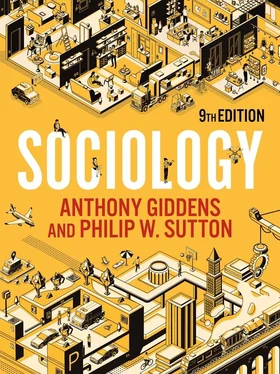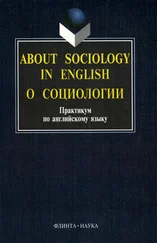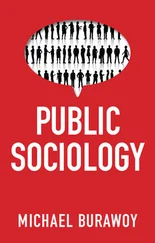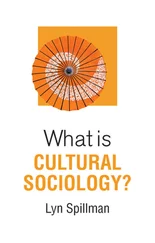Third, even if we accept that global warming is real and is partly explained by industrialization, some argue that the predicted consequences are highly speculative at best and grossly exaggerated at worst. Computer modelling of the kind used by the IPCC is notoriously unreliable, especially when extrapolating current trends far into the future, and suggestions of a 6°C rise by 2100 amount to scaremongering. Politically, economically and socially, our efforts would be better directed at tackling other more urgent social problems, such as poverty in developing countries, rather than wasting valuable resources on an uncertain ‘problem’ (Lomborg 2001).
Although some forecasts at the extreme end of climate science do suggest an increase of 6°C is possible by 2100, this assumes no change in the policies of governments aimed at reducing carbon emissions – already an outdated assumption. We must bear in mind that there are many uncertainties in climate forecasting, including cloud feedback, changing ice-sheet flows in Antarctica and Greenland, landuse change, technological developments, the impact of aerosols, the extent of behavioural changes and a lack of data in some regions, which hinder accurate modelling.
Given the global situation, it is not possible to rule out completely the more radical and devastating effects of global warming this century. Nevertheless, the history of environmental politics in the twentieth century is littered with failed predictions of global disaster and catastrophic societal collapse, so it makes sense for social scientists to work with the best available scientific research, which is currently the ongoing IPCC programme. It is also correct that computer modelling can conflict with real-world evidence, but the IPCC climate models are complex and built on evidence gathered from many sources around the world. The Fourth Assessment Report noted that, since 1990, IPCC forecast values have averaged 0.15 to 0.3°C increase per decade, which compares favourably with the observed increase between 1990 and 2005 of 0.2°C per decade. Such evidence suggests that the IPCC modelling is, in fact, the most accurate we have.
The ‘ClimateGate’ affair, discussed in ‘Using your sociological imagination’ 5.2, has been a salutary experience, not just for climate scientists, but for the academic community as a whole. In an increasingly global academic environment, which operates within societies where easy access to the internet and ideals of freedom of information combine to create expectations of open access to information and data, scientific practice often seems to be catching up. It is certainly not unusual for groups of scientists to guard jealously their raw data in order to protect their own knowledge claims, and, although it is common to speak of a ‘scientific community’, it is important to remember that scientific work, like all other spheres of social life, is highly competitive. For the foreseeable future at least, it is likely that an uneasy tension between established scientific practice and the emerging culture of open access to information will continue.
USING YOUR SOCIOLOGICAL IMAGINATION
5.2 ClimateGate: a cautionary tale
Climate change science was called into question in 2009, when the Climatic Research Unit at the University of East Anglia in the UK had its email system hacked and around 1,000 emails, including exchanges between members of the unit and colleagues around the world, were published on the worldwide web – an affair now known as ‘ClimateGate’.
In some of these emails, the director, Professor Phil Jones, referred to performing ‘a trick’ with climate data and talked of ‘hiding the decline’ in temperature for one data series. He also admitted refusing repeated requests to share data with critics and asking a colleague to delete all emails relating to the IPCC’s Fourth Assessment. Jones later argued that the email comments were taken out of context; the ‘trick’ was simply finding a creative way of joining two datasets, while ‘hiding the decline’ meant correcting a false impression in one dataset by making a composite set that also included instrumental data (BBC 2010).
Sceptics see this episode as supportive of their case that many climate scientists, whose careers and reputations have become intertwined with proving anthropogenic global warming, are prepared to sacrifice key scientific principles of openness and peer review in order to protect themselves and their ‘unproven’ thesis. Then, in 2010, after criticism from glaciologists, the vicechair of the IPCC admitted that a claim in the 2007 report that Himalayan glaciers ‘could disappear by 2035’ was wrong. Mistakes such as this, say sceptics, raise the issue of how many other IPCC predictions are incorrect, calling the existence of global warming into question.
‘ClimateGate’ was the subject of three independent inquiries: a parliamentary inquiry, a university inquiry into eleven key scientific papers, and a university-commissioned inquiry led by a senior civil servant, Sir Muir Russell, into the hacked and leaked email exchanges. All three found no evidence of scientific malpractice, falsification of data or attempts to subvert the peer review process. However, the Russell Review (Russell 2010: 10–11) did criticize the unit for being unhelpful and defensive when requests for data were made under the Freedom of Information (FoI) Act. It also criticized the university and the unit for failing to appreciate the statutory requirements of the FoI Act and the potential damage that could be caused to climate science research and the university itself by withholding data. A separate review of the IPCC’s main forecasts, commissioned by the Dutch government in 2010, found no errors that might call into question the finding that anthropogenic climate change was occurring.
If the evidence of global warming is compelling, why should this unit be wary of giving out information and withhold some of its data? What impact might hacking of this kind have on the practice of climate science?
Responding to global warming
The industrial countries currently produce far more greenhouse gases than the developing world, and China has overtaken the USA and emits more carbon dioxide than any other single country. However, emissions from the developing world are increasing, particularly in countries undergoing rapid industrialization, and are expected to be roughly equal to those of industrialized countries sometime around 2035. Taking population size into account, and looking at emissions per capita, China and India currently produce lower levels than the USA, Europe, the Russian Federation and Japan, which shows why some developing countries see their own ‘survival’ emissions as far less damaging than the ‘luxury’ emissions of the already rich countries.
There is also a disjunction between the widespread acceptance of global warming and people being prepared to change their routines to help tackle it. Giddens (2011: 2) calls this (unsurprisingly) ‘the Giddens Paradox’. This states that, as people experience no clearly tangible effects of the dangers of unchecked global warming in their everyday lives, they will not change their environmentally damaging actions. Car dependency is a clear example of this. Yet, if they wait until global warming does impact on their lives, it will be too late to do anything about it. Before that happens, ways have to be found to ‘[embed] it in our institutions and in the everyday concerns of citizens’ (ibid.: 3).
Without the positive involvement of the critical mass of individual citizens, it seems unlikely that government policies alone will succeed. But a coordinated global approach to cutting greenhouse gas emissions is made more difficult in the context of uneven economic development at the national level, which produces as much disagreement as agreement on how to coordinate reductions and adaptive measures.
Читать дальше












